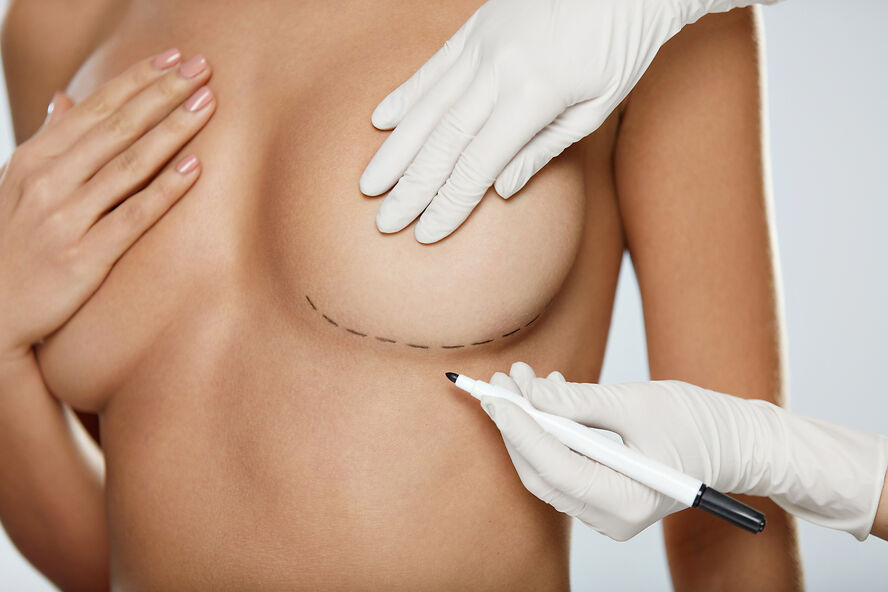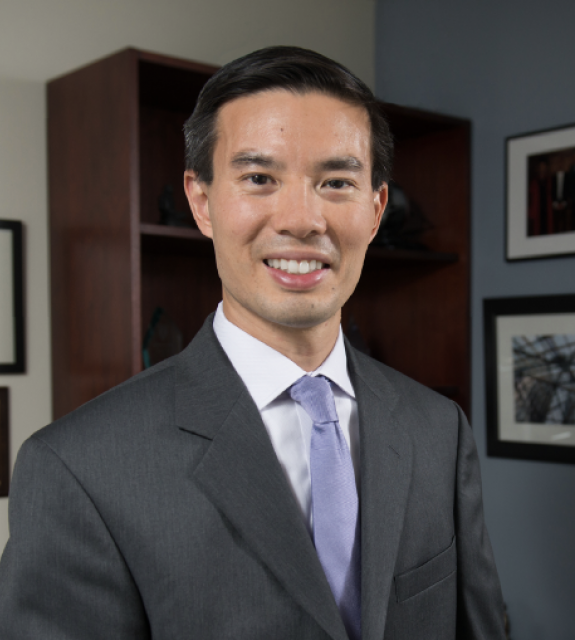Whether you're considering a breast lift, augmentation with implants, or both, it's essential to understand the factors that influence candidacy, the procedures themselves, and their potential effects on your breast symmetry and shape. Dr. Josh Waltzman offers expert advice to help you make informed decisions on your path to achieving your desired breast appearance.

Determining Your Candidacy
A breast lift, or mastopexy, is a procedure designed to elevate the nipple position and remove some skin to tighten the breast. If a patient’s nipples sit below the level of their breast folds, then they are likely a good candidate for a breast lift. A breast lift does not change the size of the overall breast but rather repositions it to a better place on the chest. So, there is one main question a patient needs to answer. “Do you like the way you look and feel in a bra?” If the answer is “Yes, " they probably need a breast lift. However, if they say “No, I don’t have enough volume”, then we need to talk about the possibility of adding more volume. The most common and predictable way to add volume to the breast is by adding an implant.
Exploring Breast Lift and Implant Procedures: Incisions, Recovery, and Results
A breast lift with or without implants is a surgical procedure that I perform under general anesthesia in my surgery center with a board-certified anesthesiologist. The entire procedure usually takes between 2-4 hours depending on what needs to be performed. The patients recover and go home the same day. During a breast lift the new position of the nipples is determined. The surrounding tissues are freed and the breast is repositioned and sewn in place with several layers of dissolvable sutures. If implants are going to be placed, then this is done before the breast is lifted. Implants can go above or below the muscle, which is something that is discussed with your surgeon before surgery. Once the implants are placed, the breast tissue is then lifted and positioned around the implant to create a more youthful and perky breast.
The type of incision that is necessary will vary based on how much lifting is necessary and the quality of the tissues. The three basic types of incisions are circumareolar (around the areola), vertical (lollipop), and Wise-pattern (anchor or inverted-T). In general terms, the more lifting someone needs, the more incision they will need. Patients are sometimes reluctant to commit to larger incisions, but I always tell my patients that it is much better to have a great-looking breast and a little longer scar, than to have a shorter scar and a weird-looking breast.
Most of my patients only take pain medication for 1-2 days, and then just Tylenol or ibuprofen. For the first month, they need to allow their body time to heal and avoid lifting anything more than 10 pounds. After 4 weeks, they can usually resume upper body exercises and weights.
At the 3-month point, the results are usually very stable. Implants have settled by this time and any swelling is typically completely gone. Patients should enjoy a rejuvenated appearance to their breasts with improved contours and nipple position.

Balancing Breast Symmetry
Breast asymmetry is extremely common, and essentially everyone has at least some degree of asymmetry. Significant asymmetry can oftentimes be addressed during surgery. Sometimes it means doing a lift on one breast and then a reduction and lift on the other side. Sometimes it means using two different size breast implants to improve the asymmetry. Personally, I try to correct as much of the volume asymmetry as possible before I place implants. I think that using implants that are more similar in size will result in breasts that tend to look more similar over the years.
Revision Chances in Breast Procedures
The likelihood of needing a revision after a breast lift is very low. The vast majority of patients who have a breast lift are very happy with their decision and their outcome. The revision rates start to go up when you add an implant at the same time as a lift. Patients need to think about these as two separate operations that are being done at the same time. One operation makes the breast higher, and one makes the breast larger. There are many forces at work when these two operations are combined. Most studies that have been published show that there is about a 15% revision rate when a lift with implants is performed. In my practice, most revisions after a lift with implants are minor in nature and can usually be performed in the office under local anesthesia. However, all patients need to understand that a revision could necessitate going back to the operating room for more significant adjustments.
Proper implant selection, pre-operative planning, and use of dissolvable meshes have also contributed to more predictability and stability in outcomes when combining a lift with implants.
Future Considerations: Implications for Breastfeeding and Mammograms
I don’t think the decision to have implants with a breast lift has any real impact on someone’s ability to breastfeed. Anytime someone has breast surgery incisions are being made through breast tissue, and this could hypothetically injure one or multiple milk ducts. For this reason, I tell all my patients that any time you have breast surgery you are increasing the likelihood that you may have to supplement your breastfeeding with formula. There is no reason they can’t try to breastfeed, and there is no reason they can’t be successful, but I have no way of predicting this for every patient. There are millions of women who have never had any breast surgery, and they still need to supplement their breastfeeding with formula.
There is no impact on a woman’s ability to have a mammogram after having a breast lift with or without implants. I usually recommend that my patients wait at least 3 months after surgery to have their mammogram (if they are due for one). If they have implants, it is important to alert the person performing the mammogram so they can properly displace the implant and effectively image all of the breast tissue. There is little to no risk of harming or rupturing an implant during a mammogram, and it certainly does not outweigh the risk of missing a breast cancer.
For more information, visit Dr. Josh Waltzman's social media:






















